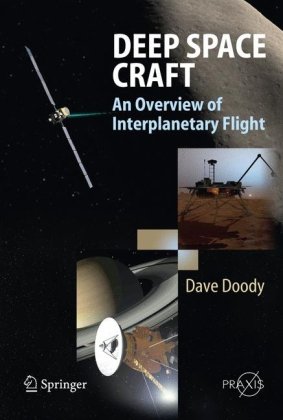

Most ebook files are in PDF format, so you can easily read them using various software such as Foxit Reader or directly on the Google Chrome browser.
Some ebook files are released by publishers in other formats such as .awz, .mobi, .epub, .fb2, etc. You may need to install specific software to read these formats on mobile/PC, such as Calibre.
Please read the tutorial at this link: https://ebookbell.com/faq
We offer FREE conversion to the popular formats you request; however, this may take some time. Therefore, right after payment, please email us, and we will try to provide the service as quickly as possible.
For some exceptional file formats or broken links (if any), please refrain from opening any disputes. Instead, email us first, and we will try to assist within a maximum of 6 hours.
EbookBell Team

4.7
16 reviewsDeep Space Craft opens the door to interplanetary flight. It looks at this world from the vantage point of real operations on a specific mission, and follows a natural trail from the day-to-day working of this particular spacecraft, through the functioning of all spacecraft to the collaboration of the various disciplines to produce the results for which a spacecraft is designed. These results are of course mostly of a scientific nature, although a small number of interplanetary missions are also flown primarily to test and prove new engineering techniques. The author shows how, in order to make sense of all the scientific data coming back to Earth, the need for experiments and instrumentation arises, and follows the design and construction of the instruments through to their placement and testing on a spacecraft prior to launch. Examples are given of the interaction between an instrument’s science team and the mission’s flight team to plan and specify observations, gather and analyze data in flight, and finally present the results and discoveries to the scientific community.
This highly focused, insider’s guide to interplanetary space exploration uses many examples of previous and current endeavors. It will enable the reader to research almost any topic related to spacecraft and to seek the latest scientific findings, the newest emerging technologies, or the current status of a favorite flight. In order to provide easy paths from the general to the specific, the text constantly refers to the Appendices. Within the main text, the intent is general familiarization and categorization of spacecraft and instruments at a high level, to provide a mental framework to place in context and understand any spacecraft and any instrument encountered in the reader’s experience.
Appendix A gives illustrated descriptions of many interplanetary spacecraft, some earth-orbiters and ground facilities to reinforce the classification framework. Appendix B contains illustrated detailed descriptions of a dozen scientific instruments, including some ground-breaking engineering appliances that have either already been in operation or are poised for flight. Each instrument’s range of sensitivity in wavelengths of light, etc, and its physical principle(s) of operation is described. Appendix C has a few annotated illustrations to clarify the nomenclature of regions and structures in the solar system and the planets’ ring systems, and places the solar system in context with the local interstellar environment.